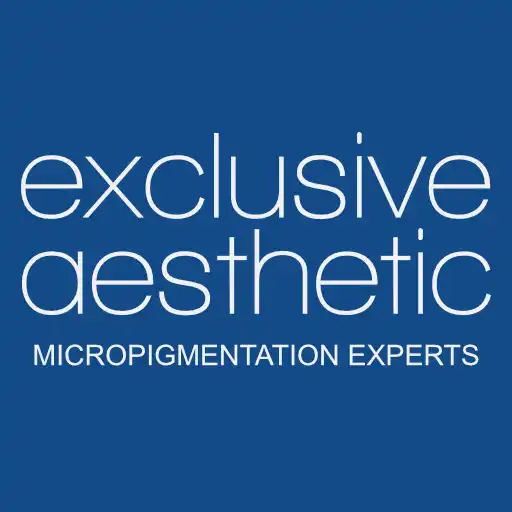Microneedling Collagen Induction Therapy Scar Removal Treatment – What Research To Perform?
Microneedling Collagen Induction Therapy Scar Removal Treatment
Outline
Introduction to MCIT scar removal treatment
Understanding MCIT scar removal
- What is MCIT?
- How does MCIT scar removal work?
Factors to consider before having MCIT scar removal treatment
- Type and severity of scars
- Skin type and sensitivity
- Treatment expectations
Researching the clinic and practitioner
- Reputation and reviews
- Qualifications and experience
- Before and after photos
Assessing safety and potential risks
- Side effects and complications
- Pre-existing medical conditions
- Consultation with a healthcare professional
Cost analysis and budgeting
- Treatment costs
- Additional expenses
- Insurance coverage
Understanding the procedure process
- Treatment duration
- Number of sessions required
- Recovery period
Alternatives to MCIT Scar Removal
- Other scar removal treatments
- Natural remedies and skincare
Lifestyle changes and post-treatment care
- Sun protection and skincare routine
- Follow-up appointments
- Managing expectations
Conclusion
Research – Microneedling Collagen Induction Therapy Scar Removal Treatment
Introduction to MCIT scar removal treatment
Microneedling Collagen Induction Therapy Scar Removal Treatment
Scar removal treatments have evolved significantly, allowing individuals to minimise the appearance of scars and improve skin texture. One such treatment gaining popularity is Microneedling Collagen Induction Therapy (MCIT). Before undergoing this procedure, conducting thorough research to ensure safety and effectiveness is crucial.
Understanding MCIT Scar removal
What is MCIT?
Microneedling Collagen Induction Therapy, commonly known as MCIT, is a minimally invasive procedure to reduce the visibility of scars. It involves using fine needles to create controlled micro-injuries in the skin, stimulating the body’s natural collagen production and encouraging skin regeneration.
How does MCIT scar removal work?
During the procedure, a specialised device equipped with tiny needles creates superficial punctures on the skin’s surface. These micro-injuries trigger the body’s healing response, prompting the production of new collagen and elastin fibres. Over time, this leads to smoother, more evenly textured skin, diminishing the appearance of scars.
Factors to consider before having MCIT scar removal treatment
Type and severity of scars – Microneedling
Before opting for MCIT scar removal, it’s essential to assess the type and severity of the scars. MCIT is particularly effective for treating acne scars, surgical scars, and stretch marks. However, deep or raised scars may require alternative treatments.
Skin type and sensitivity
Individuals with sensitive skin or certain skin conditions should consult a dermatologist before undergoing MCIT treatment. The procedure may not be suitable for those with active acne, eczema, or rosacea, as it can exacerbate these conditions.
Treatment expectations
Realistic expectations are crucial when considering MCIT scar removal. While the procedure can significantly improve the appearance of scars, it may not eliminate them. Multiple sessions may be required to achieve optimal results.
Researching the clinic and practitioner
Reputation and reviews – Microneedling
Before scheduling an MCIT treatment, research the clinic and practitioner thoroughly. Look for reviews and testimonials from previous patients to gauge the clinic’s reputation and the practitioner’s expertise.
Qualifications and experience
Ensure that the practitioner performing the MCIT procedure is qualified and experienced in dermatology or cosmetic procedures. Verify their credentials and inquire about their experience with scar removal treatments.
Before and after photos
Ask the clinic for before-and-after photos of previous MCIT patients. This will give you a better idea of the potential results and the practitioner’s skill level.
Assessing safety and potential risks
Side effects and complications
Like any cosmetic procedure, MCIT scar removal carries certain risks, including redness, swelling, and minor discomfort. More severe side effects, such as infection or scarring, may occur in rare cases. Discuss these risks with your practitioner before proceeding with treatment.
Pre-existing medical conditions
Inform your practitioner about any pre-existing medical conditions or allergies you may have. Specific health issues, such as autoimmune disorders or a history of keloid scarring, may affect your suitability for MCIT treatment.
Consultation with a healthcare professional
Before undergoing MCIT scar removal, consult a qualified healthcare professional. They can assess your skin condition, discuss your treatment goals, and recommend the most suitable action.
Cost analysis and budgeting
Treatment costs
The cost of MCIT scar removal varies depending on factors such as the size of the treatment area and the number of sessions required. Obtain a detailed quote from the clinic, including any additional fees for consultations or post-treatment care.
Additional expenses
In addition to the treatment, consider additional expenses such as skincare products or follow-up appointments. Budget accordingly to ensure that you can afford the entire course of treatment.
Insurance coverage
In most cases, MCIT scar removal is considered a cosmetic procedure that is not covered by insurance. However, your insurance provider may cover part of the cost if scarring results from a medical condition or injury. Check with your insurance company to determine your coverage options.
Understanding the procedure process
Treatment duration – Microneedling
MCIT scar removal typically requires multiple sessions several weeks apart to achieve optimal results. The exact number of sessions will depend on factors such as the severity of the scars and your skin’s response to treatment.
Number of sessions required
During your initial consultation, your practitioner will assess your scars and recommend a personalised treatment plan. Be prepared for multiple sessions, as significant improvement may require three to six treatments or more.
Recovery period
Following each MCIT treatment session, you can expect some redness and swelling in the treated area. This usually subsides within a few days, and most patients can resume their normal activities immediately. However, it’s essential to follow post-treatment care instructions provided by your practitioner to optimise results and minimise complications.
Alternatives to MCIT scar removal
Other scar removal treatments
While MCIT is effective for many types of scars, alternative treatments are available, such as laser therapy, chemical peels, and dermal fillers. Consult your practitioner to determine the best option for your needs and preferences.
Natural remedies and skincare
In addition to professional treatments, specific natural remedies and skin care products may help improve the appearance of scars. These include silicone gel, vitamin E oil, and topical creams containing ingredients like retinol or hyaluronic acid. However, their effectiveness varies; results may take longer than clinical procedures.
Lifestyle changes and post-treatment care
Sun protection and skincare routine
Protecting your skin from sun exposure is essential during and after MCIT scar removal treatment. Wear sunscreen with a high SPF, avoid prolonged sun exposure, and wear protective clothing to prevent hyperpigmentation and damage to the treated area.
Follow-up appointments
Attend all scheduled follow-up appointments with your practitioner to monitor your progress and address any concerns or complications. They may recommend additional treatments or adjustments to your skincare routine to optimise results.
Managing expectations
While MCIT scar removal can significantly improve the appearance of scars, realistic expectations are essential. Results may vary depending on scar type, skin condition, and individual response to treatment. Be patient and diligent with your skincare regimen, and consult with your practitioner if you have any questions or concerns.
Conclusion
Microneedling Collagen Induction Therapy Scar Removal Treatment – Researching before having a scar removal treatment using MCIT is crucial for ensuring safety, effectiveness, and satisfactory results. By considering factors such as scar type, practitioner qualifications, treatment costs, and post-treatment care, individuals can make informed decisions and achieve smoother, more evenly textured skin.
FAQs – Microneedling Collagen Induction Therapy Scar Removal Treatment
Popular questions to ask before undergoing an MCIT Scar Removal treatment
Q1. Is MCIT scar removal suitable for all types of scars?
Q2. How many sessions of MCIT Scar treatment are typically required?
Q3. Are there any long-term side effects of MCIT scar removal?
Q4. Can I undergo MCIT treatment if I have sensitive skin?
Q5. Will insurance cover the cost of MCIT scar removal?
Microneedling Collagen Induction Therapy Scar Removal Treatment
Links To Our Services
Information
Questions To Candice Using WhatsApp
Want to discuss a treatment or training course with Candice? Please click on the WhatsApp button below or text +971 56 116 6689. We hope to reply within 48 hours.
Booking A Treatment
To make a treatment appointment or enquire about Candice’s diary, please email candice@exclusiveaesthetic.com. Appointments require a booking fee and 7 days’ notice to cancel.
Treatment Location
Dubai appointments are available Saturday to Wednesday, 9 am to 6 pm C37, Healthcare City, Dubai, United Arab Emirates. Need to contact c37 reception for directions, etc.? Please call +971 4 383 8333.
Treatment Licensing
All Dubai procedures conform to the highest medical standards and are performed under DHA licence at C37, Healthcare City, Dubai, United Arab Emirates.
Looking For A Training Course?
We offer several micropigmentation training courses in various Dubai and Middle East locations. Courses include Semi Permanent Makeup, Eyebrow Tattooing, Lip Blush training, Medical Micropigmentation, Areola Tattooing training and Hair & Scalp Micropigmentation. See our range of micropigmentation training courses here.
Our training company, Exclusive Aesthetics Technical and Occupational Skills Training, provides training courses.
Microneedling Collagen Induction Therapy Scar Removal Treatment
Read more on the NIH website here.


